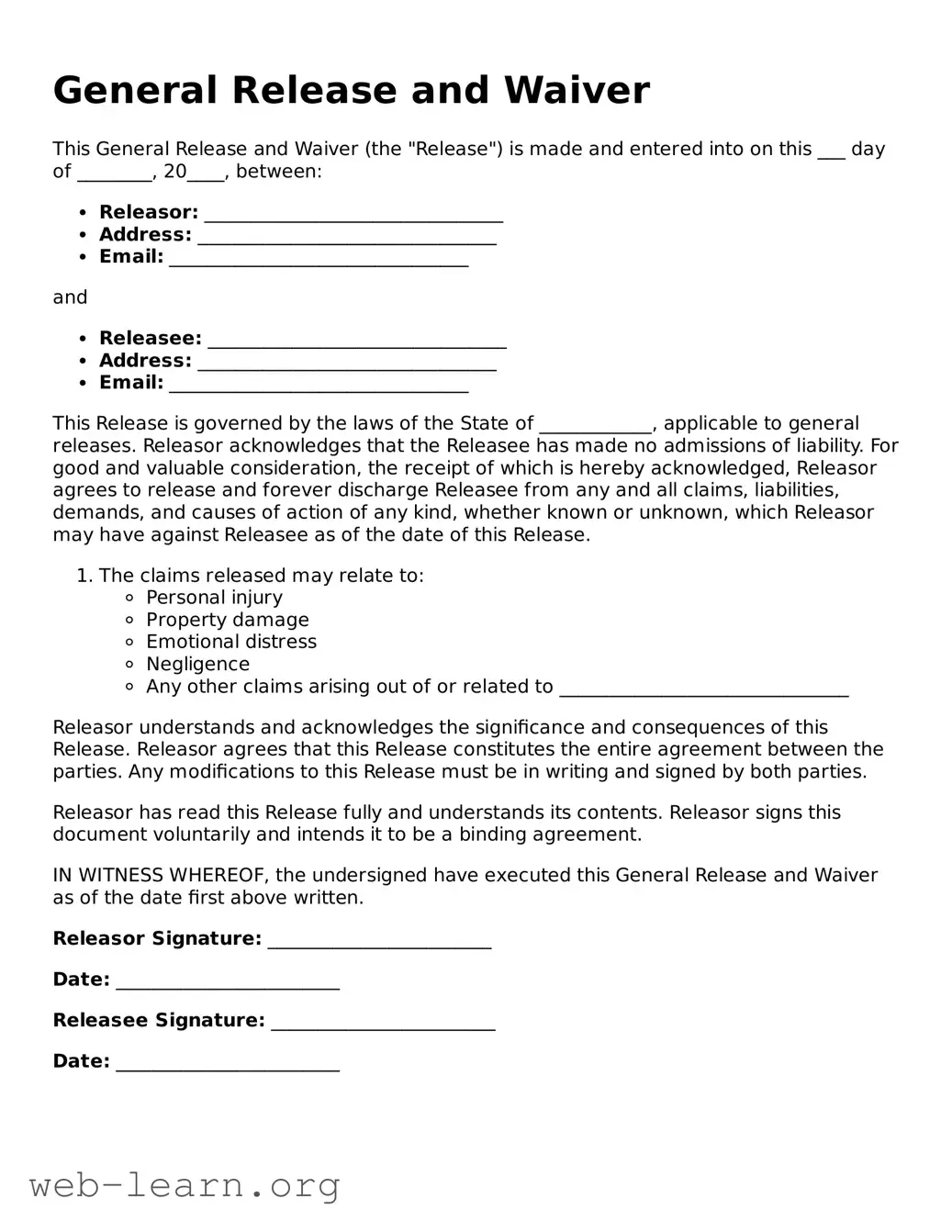General Release and Waiver
This General Release and Waiver (the "Release") is made and entered into on this ___ day of ________, 20____, between:
- Releasor: ________________________________
- Address: ________________________________
- Email: ________________________________
and
- Releasee: ________________________________
- Address: ________________________________
- Email: ________________________________
This Release is governed by the laws of the State of ____________, applicable to general releases. Releasor acknowledges that the Releasee has made no admissions of liability. For good and valuable consideration, the receipt of which is hereby acknowledged, Releasor agrees to release and forever discharge Releasee from any and all claims, liabilities, demands, and causes of action of any kind, whether known or unknown, which Releasor may have against Releasee as of the date of this Release.
- The claims released may relate to:
- Personal injury
- Property damage
- Emotional distress
- Negligence
- Any other claims arising out of or related to _______________________________
Releasor understands and acknowledges the significance and consequences of this Release. Releasor agrees that this Release constitutes the entire agreement between the parties. Any modifications to this Release must be in writing and signed by both parties.
Releasor has read this Release fully and understands its contents. Releasor signs this document voluntarily and intends it to be a binding agreement.
IN WITNESS WHEREOF, the undersigned have executed this General Release and Waiver as of the date first above written.
Releasor Signature: ________________________
Date: ________________________
Releasee Signature: ________________________
Date: ________________________
